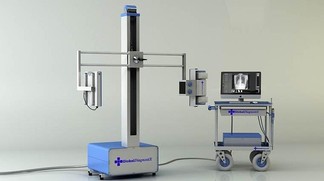Feb 11 2013
Two engineers of the Cooperation & Development Center and a physician, medical director of the EssentialMed Foundation, launch a project to develop an appropriate diagnostic imaging system adapted to the context of developing countries.
 © 2012 EPFL
© 2012 EPFL
More than 2/3 of the world’s population have no access to diagnostic imaging
Basic diagnostic imaging, mainly radiography and ultrasound, are crucial for taking adequate diagnostic decisions for a wide variety of conditions such as pregnancy, road traffic accidents, tuberculosis, complications of infant pneumonia and cardiovascular problems. Yet over two thirds of the world’s population does not have access to these vital medical instruments.
This major issue is mainly due to the mismatch between existing technologies and the context of developing countries. Equipment developed for the environment of industrialized countries is neither appropriate for the rough-and-ready or deficient infrastructure found in most resource-poor areas, nor affordable for the limited available healthcare budgets. Regarding radiography in particular, solutions based on film technology have proven being not adapted to district hospitals in developing countries and modern digital imaging solutions are too expensive, complex and fragile.
An alliance to address a technological challenge
The GlobalDiagnostiX project aims to develop and subsequently deploy an appropriate diagnostic imaging system. Under the leadership of the EPFL’s Center for Cooperation and Development, an alliance of leading technology research laboratories has been built involving EPFL, the University of Applied Sciences (HES), the Paul Scherrer Institute, the EssentialMed Foundation, the Swiss Tropical and Public Health Institute, University hospitals and other public and private partners, as well as local actors in developing countries.
A radiology machine that is easy to use, robust, low-cost and adapted to local context
The main challenge consists in developing an appropriate digital radiography machine, including an ultrasound imaging module, for a 10-years Total Cost of Ownership below $50’000 (purchase price plus lifecycle costs) - representing a typical tenfold reduction compared to existing solutions. The device shall allow making high-quality images for typical applications of a district hospital in remote and resource-poor areas. In addition it must be adapted to the local context and to the specific challenges inherent to developing countries. In particular, it has to include a power back-up solution for up to 5 hours mains-independent work, and must resist very unstable and perturbed electrical supply. The whole system has to be very robust and durable, require minimum maintenance, and survive high temperatures, humidity and dust. Additionally, it must be easy to use even by incompletely trained staff and be largely language independent (e.g. use of a pictograms and image based user-interface). Compliance with applicable international standards and regulatory directives is an imperative of the project.